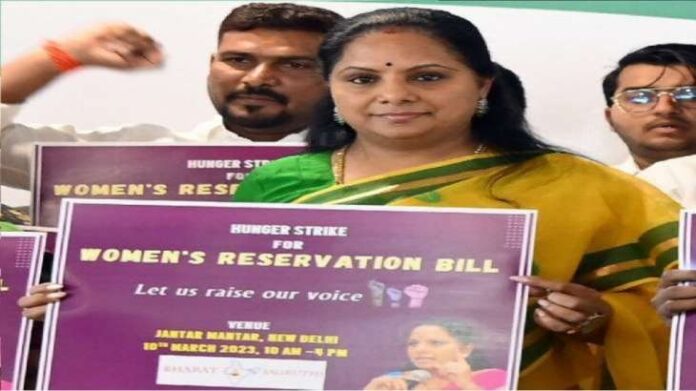In May 2008, the Bill was presented in the Rajya Sabha and submitted to a standing committee. It was passed in the House in 2010 and eventually forwarded to the Lok Sabha. The Bill, however, expired with the 15th Lok Parliament.
Bharat Rashtra Samithi leader Kalvakuntla Kavitha on Friday began her day-long hunger strike with the support of 18 political parties at Jantar Mantar to demand that the Women’s Reservation Bill be presented in the current session of Parliament.
The bill, which seeks to reserve one-third of Lok Sabha and state legislative assembly seats for women, was initially proposed in 1996. Since then it has been presented numerous times before the parliament. The bill was passed in Rajya Sabha in 2010, however, it expired after the 15th Lok Parliament was dissolved in 2014. Here is everything you should know about the Women’s Reservation Bill.
Origin of the Women Reservation Bill.
- The inspiration for this bill came from a constitutional amendment passed in 1993.
- According to the constitutional amendment, one-third of the village council leader, or Sarpanch, posts in the gram panchayat shall be allocated for women.
- The Women’s Reservation Bill was introduced as a long-term strategy to expand this reservation to the Lok Sabha and state legislatures.
What is the Women’s Reservation Bill?
- The bill proposes to reserve 33% of seats in Lok Sabha and all state legislative assemblies for women.
- Reserved state or union territory seats may be assigned to various districts through rotation.
- Seat reservations for women will be phased away 15 years after this Amendment Act is passed.
Why there is a need for a Women’s Reservation Bill.
- Global Gender Gap Report 2021 reports that India has dropped 13.5 percent on the political empowerment index, and the number of women ministers has dropped from 23.1% in 2019 to 9.1% in 2021.
- Even the government’s Economic Surveys admit that women’s representation in Lok Sabha and legislative assembly is low.
- Women Panchayati Raj members have contributed significantly to the development and overall well-being of society in villages. Many would undoubtedly wish to work on a bigger scale; yet, they confront many problems in India’s political framework.



























